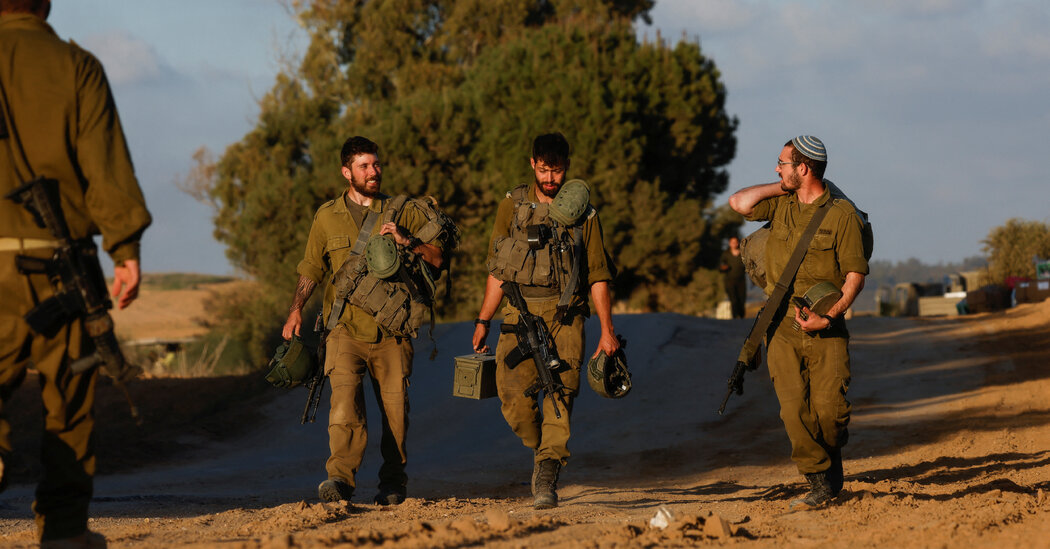When Ghada Abu Samra leaves the room in Rafah where she, her mother and brother have been living between their searches for food and clean water, she sees more Gazans packing in to the already overcrowded southern city.
“Every day the numbers grow in a massive way,” said Ms. Abu Samra, a 24-year-old web development student who has been in Rafah for weeks. “There is no place for anyone except to sit in the streets and build a tent.”
As almost all of Gaza’s 2.3 million residents have been driven from their homes by Israel’s nearly three months of airstrikes and evacuation orders, Rafah, once a city of 300,000 people, has become the main refuge for those displaced. More than 1 million people are squeezed into the city, in a tiny corner of the enclave on the Egyptian border, the United Nations said this week.
People are struggling to find the materials to make even the most makeshift tents, which spread in rows across sandy ground. The misery is compounded by the spread of disease and an already overwhelmed health system, according to the United Nations. The city is not safe either: Airstrikes are pummeling all of Gaza, including areas that the Israel military has called on Gazans to flee to.
Israel launched the war after Hamas, the political and armed group that controls the territory, carried out an attack on Oct. 7 in southern Israel, killing some 1,200 people, according to Israeli authorities.
With Rafah’s increasingly dense population, the potential death toll of a single strike is high, noted the Al Mezan Center, a Gaza-based human rights organization, on social media.
More than 160 people were killed by airstrikes across Gaza in the previous 24 hours, the Gazan Health Ministry said Friday. The death toll over three months has surpassed 20,000 people killed, many of them women and children, according to the ministry.
On Thursday, the Gazan government media office said that Israeli strikes in six locations in Rafah had killed dozens over the previous three days.
“Rafah is not safe at all; on the road I pass through every day, three rockets hit yesterday, killing 10 people,” said Ms. Abu Samra, who added that her family had been displaced seven times since the war began. “In any moment I can be killed. You don’t know whose turn is next.”
“The places that the Israelis say ‘this area is safe, go there,’ nowhere is safe,” she said.
But still more are expected to flee to Rafah. On Wednesday, the Israeli military dropped leaflets on residents of two blocks in the city of Deir el-Balah, an area that is home to 4,700 people in central Gaza, ordering them to leave for shelters, according to the United Nations. But many people have chosen to head straight to Rafah, worried that they will just have to flee again.
“The situation in Rafah is a total misery,” said Mohammed Shaath, 68, a retired engineer from the southern city of Khan Younis who has been helping a group with aid distribution in Rafah, including helping to cook hot meals.
“There is no single empty inch in Rafah,” he said. “Tents everywhere. And by tents, I don’t mean the proper tents people are familiar with. It is simply anything that covers one’s head.”
France and Jordan have responded to the dire situation in Gaza by airdropping aid, according to a video posted on social media Friday by France’s president, Emmanuel Macron. Reuters reported that on Thursday night the two nations dropped seven tons of humanitarian and medical aid for the battered city of Khan Younis, in southern Gaza.
People sign up to receive a tent from the United Nations or Palestine Red Crescent, he said, but receiving one can take a long time and people can’t wait, especially in miserable winter conditions. Consequently, many use old wooden beams, plastic and nylon from greenhouses nearby to build any sort of shelter, he said.
Finding the materials to make even the most ramshackle of shelters has become a daily routine for many in Rafah, he said.
Despite the conditions, Mr. Shaath said he is preparing to move with his family there even though he doesn’t know where they will live. He said the Israeli military recently warned residents of a city block near his home in Khan Younis and those sheltering there to flee.
He fears their block will be next.
“I have no other option for myself and my family,” he said. “They will bomb us here in Khan Younis.”
“I am not worried about myself,” he added. “I am 68 already. I am worried about the children. They are the future.”


















































